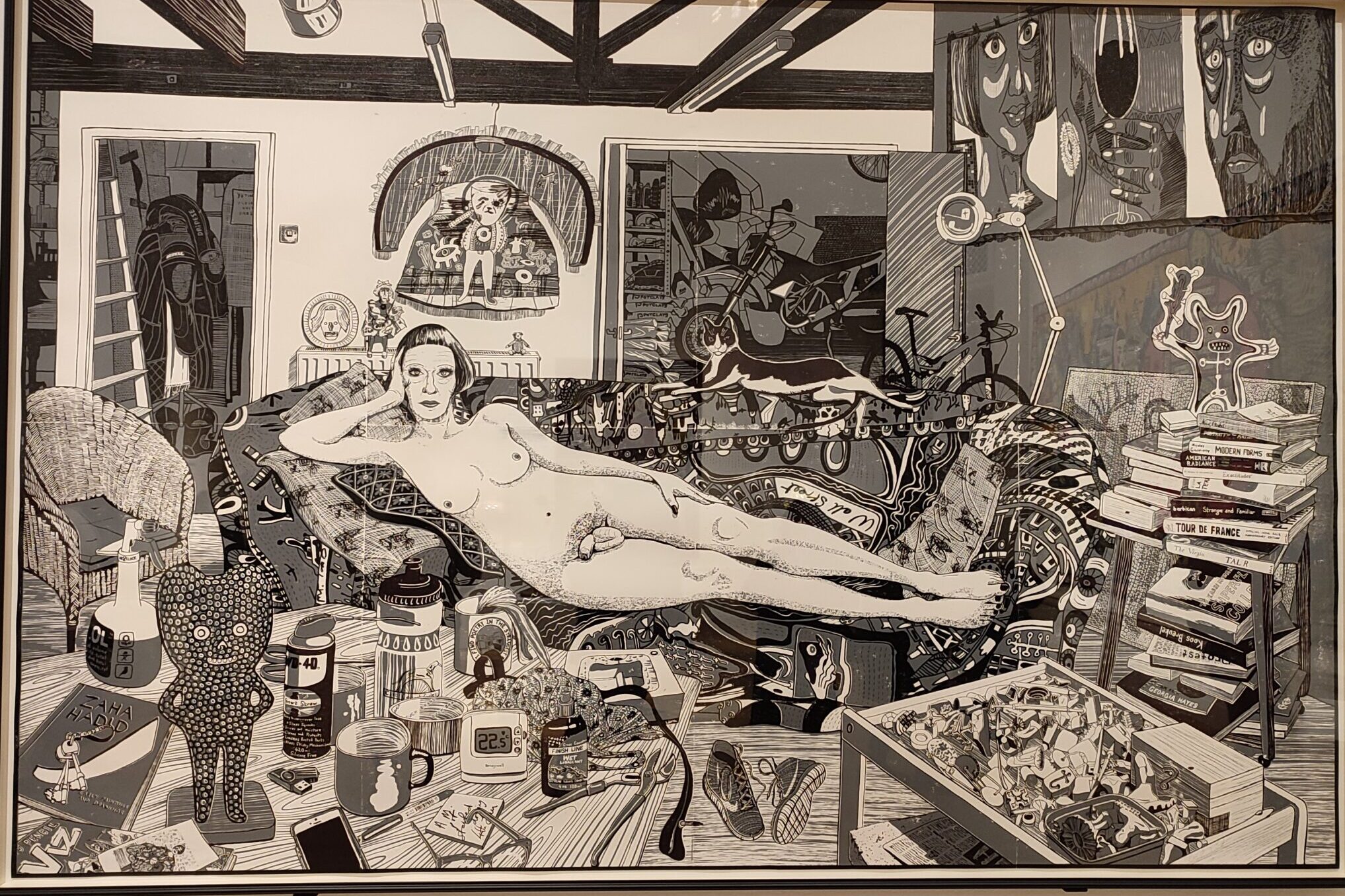As a Grayson Perry enthusiast, I was excited to hear of his extensive exhibition at the Scottish National Gallery in Edinburgh. I first visited the exhibition on the 22nd October 2023 and was enamored by his work, resulting in me spending 2 hours observing the various prints, tapestries and ceramic pieces featured within the rooms.

I particularly enjoyed the audio commentary available to listen via a QR code, providing further insight from the words of the artist himself, in addition to the humorous descriptions next to each piece. Perry’s unique writing style reflects that of his speech, taking a casual, engaging approach likewise seen in his 2016 book ‘Playing To The Gallery’, which discusses his personal journey as a contemporary artist while answering questions that many of us are afraid to ask, like ‘what is good art?’. In keeping with his personality, Perry’s artwork is brash and unapologetic, exploring British culture and his own experiences as a transvestite potter.
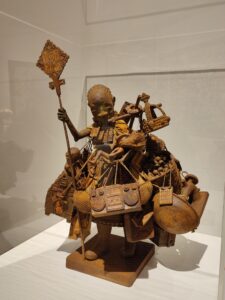
Throughout the exhibition, I was most surprised by the quantity and range of work which Grayson Perry demonstrates- including cast iron sculptures, garish pottery and intricate woodcuts- however I was especially drawn to his tapestries, which depict detailed narratives based on his ideas and thoughts on topics such as identity, class, taste, social politics, sex, counterculture and (often dysfunctional) family dynamics. His collection, ‘The Vanity of Small Differences’, is a series of six tapestries based on the life of his character Tim Rakewell and his climb up the social ladder- a modern spinoff of William Hogarth’s series of eight paintings, ‘A Rake’s Progress (1732-4), telling the story of Tom Rakewell’s journey through the social classes of Georgian England. The collection was named after Sigmund Freud’s quote, ‘We hate no-one quite as much as those who are nearly the same as us’, which Perry relates to the great insult of comparing artists to others and the desire to be seen as ‘original’ and avant-garde (BBC Radio: The Reith Lectures). While listening to ‘The Reith Lectures’ podcasts with Grayson Perry, I found Perry’s ideas around the relationship between himself as an artist and the wealthy art collectors particularly interesting; as a artist, he both rebukes and appeals to these people- hence ‘Playing’ to the gallery. At the end of the day, we need to make a living from our craft, which requires us to cater to our investors in spite of our distaste for the well off upper-crust of modern society.
I was especially drawn to ‘The Annunciation of the Virgin Deal’, 2012. In this tapestry, Perry features imagery associated with the ‘modern bourgeoise; home-grown vegetables, Penguin book mugs, a Cath Kidston bag and the ‘chalice of the upper-middle class: the cafetiere. Perry also comments on the hypocritical nature of the upper classes, juxtaposing the eco-friendly reusable nappies with these ‘two-home, three-car, Aga-owning’ characters. Each tapestry was designed digitally and translated to weave by Flanders Tapestries in Belgium. I was also intrigued by his references to historical paintings by artists like Carlo Crivelli and Jan Van Eyck, which Perry believes the educated middle class relish to boast.
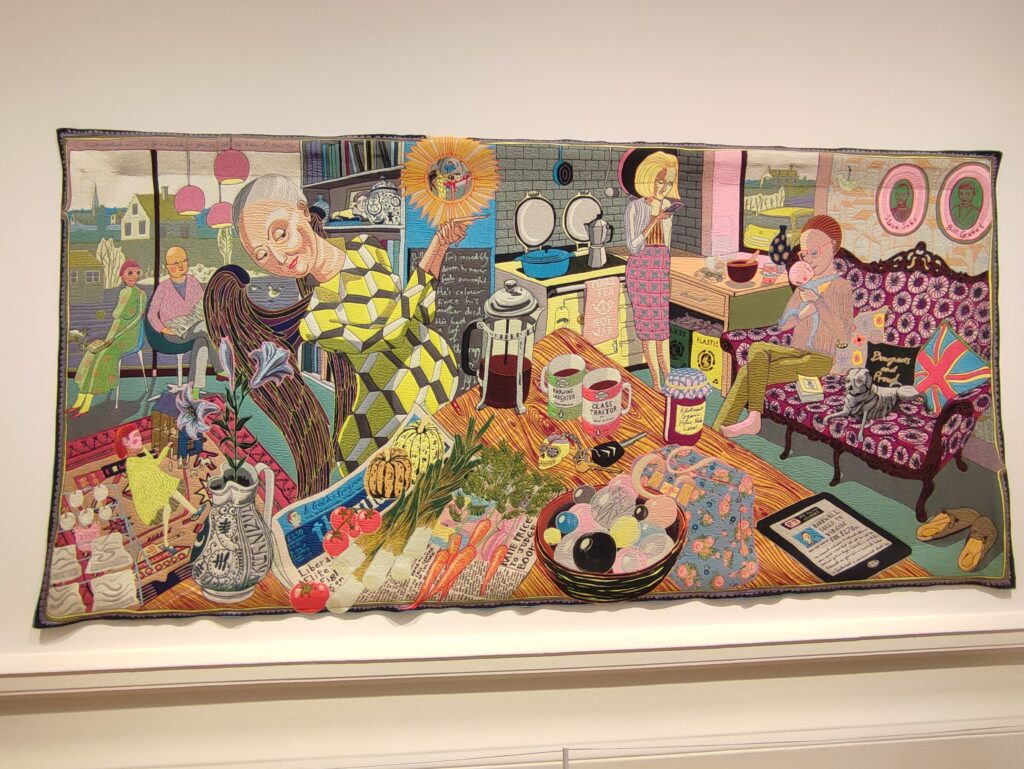
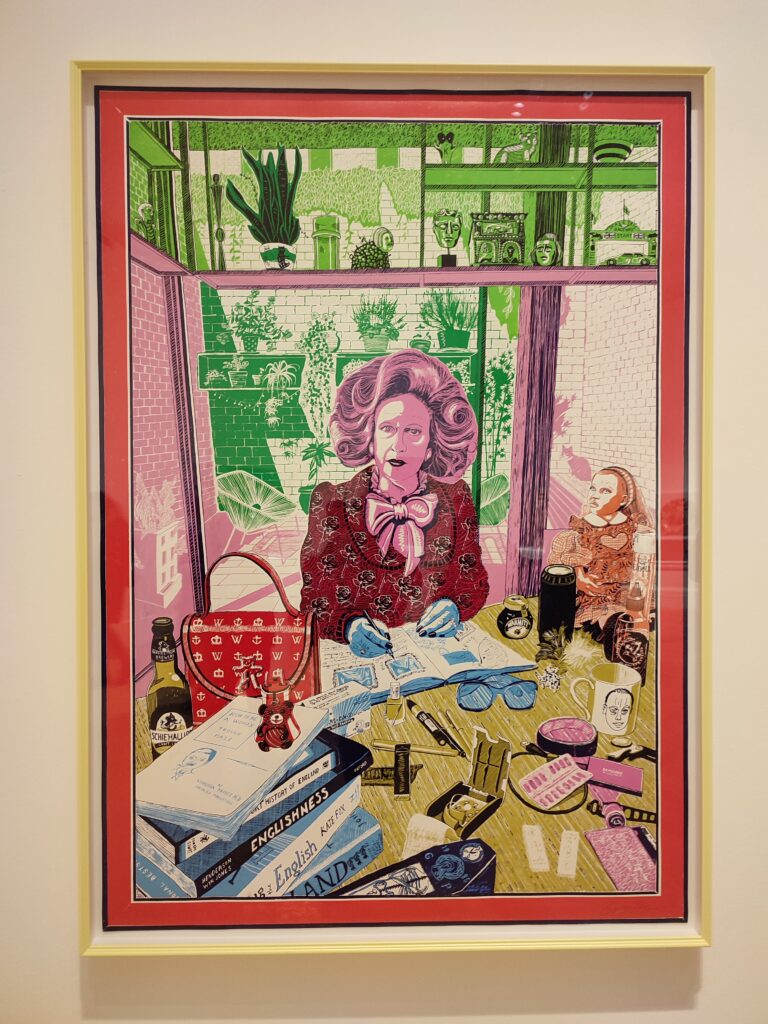
Grayson Perry’s use of ceramics is similarly influenced by class prejudice; he explains that vases are viewed as ‘polite, humble and domestic- not qualities celebrated at the cutting edge’ of the art world. In the 1980s, pottery was associated with the female middle-class, meaning his crude, explicit works offended pottery lovers. As well as using pottery to create autobiographic narratives, Perry expresses his views on the art world in relation to the educated upper classes, including engraving phrases such as, ‘war and poverty are bad, I learned that at university’ and ‘rich people deserve equal rights too!’ (‘Luxury Brands for Social Justice, 2017), onto the surface.
I found the use of humor and relatability in his work highly inspiring. As someone who has lived in a ‘deprived’ area until going to university, I can connect to the themes and culture presented in his work. These themes are something I like to express in my own work, presenting the lives of the average/working class people of Britain, thus inciting new ideas about how I can explore class culture through clothing and objects.

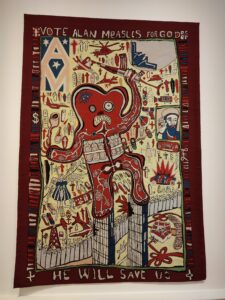
Alan Measles is also a key feature of Grayson Perry’s art. Perry uses the image of his childhood teddy as his ‘personal metaphor for God, masculinity, care and security’, influenced by the importance of Alan Measles in providing a sense of comfort and escape in his youth. I enjoy the imaginative qualities this character adds to Perry’s artworks, encouraging us as the audience to give thought to the things which provide us with comfort and recognise its importance to our mental wellbeing and emotional regulation.
Following the exhibition, I attended the ‘A House for Essex and Other Stories’ lecture by Charles Holland, which explained architectural design, inspiration for, and process of creating a house for Grayson’s character, Julie Cope. I found this lecture very interesting, as I had paid more attention to the physically present ‘fine artwork’ in the gallery as opposed to the photographs of the house. I also enjoyed hearing about the creative process behind the work from the architect himself, which was presented in a humorous and engaging manner.
Overall I highly recommend the exhibition to all art lovers, but especially to the cynical, young artists venturing into the contemporary art world.
Grayson Perry’s ‘Smash Hits’ exhibition at the National Gallery of Scotland ends on the 12th November 2023.
Grayson Perry | Smash Hits | National Galleries of Scotland
